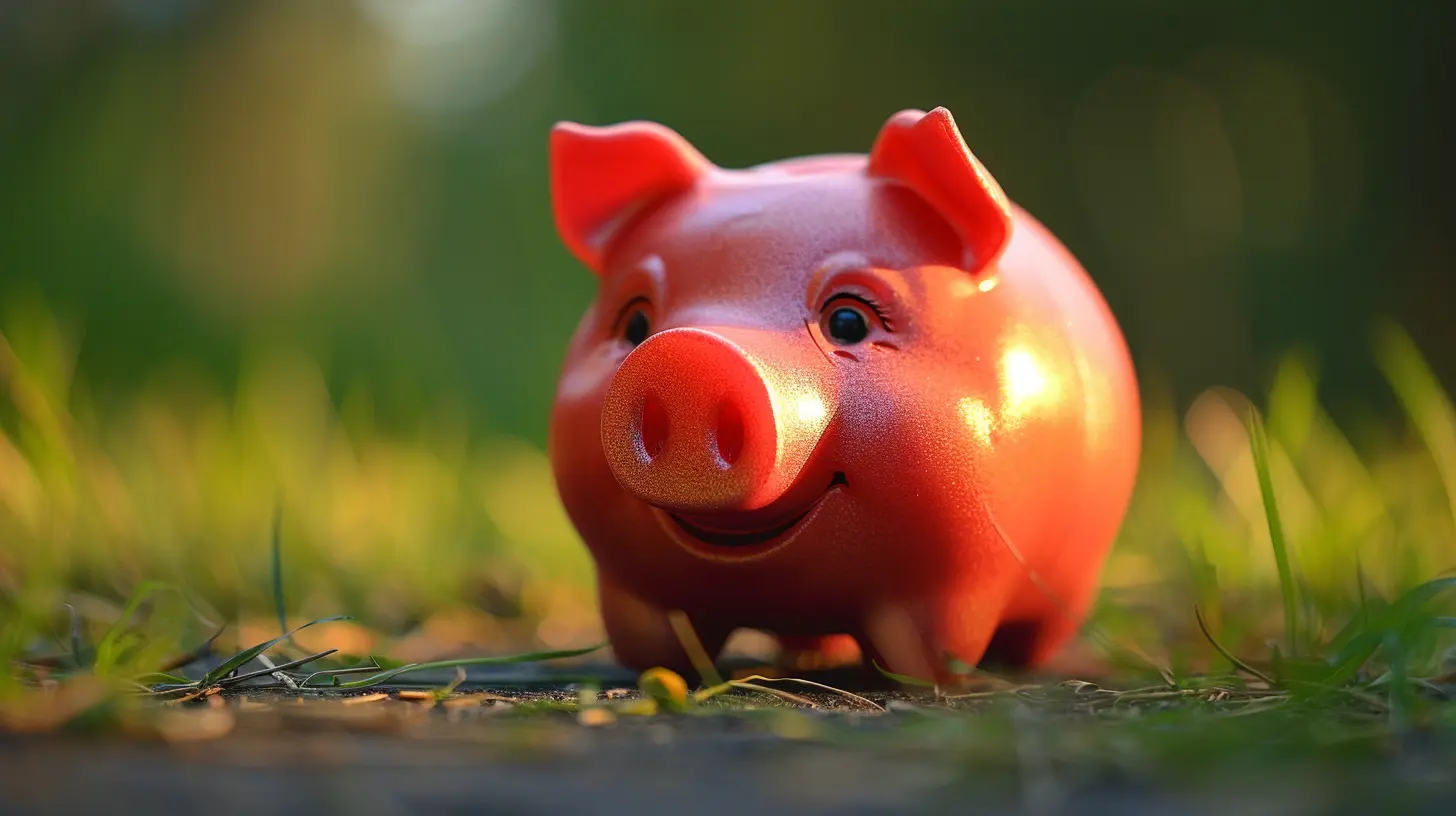How to Choose the Right Investments for Your IRA
21 November 2025
If you're reading this, chances are you're trying to figure out how to make the most of your IRA. Good news—you’re already ahead of the game by even caring enough to look into it. A lot of people open up an IRA, toss some money in, and then forget they even have it. But that’s like planting seeds and then never watering them. If you want your retirement money to grow, you've got to be smart about what you invest in.
Now, the tricky part is choosing the right investments. That’s where most folks get stuck. With so many options—stocks, bonds, mutual funds, ETFs, real estate investment trusts (REITs), and more—it's no wonder people feel overwhelmed. But don’t worry, I’ve got your back. This guide will walk you through everything you need to know to confidently choose the right investments for your IRA.
Let’s get into it!
What’s an IRA, Really?
Before we dive into how to choose investments, let's make sure we're all on the same page about what an IRA is.So, an IRA (Individual Retirement Account) is basically a basket. You can throw different types of investments into it—stocks, bonds, ETFs, you name it. The whole purpose of this basket? To grow your money for retirement, ideally with some tax advantages along the way.
There are two main types of IRAs:
- Traditional IRA: You contribute pre-tax dollars. You’ll pay taxes later when you withdraw.
- Roth IRA: You contribute after-tax dollars. Withdrawals during retirement? Tax-free.
The type of IRA you have matters because it affects your tax situation, which in turn affects your investment strategy. Always keep that in mind when picking your investments.
Know Thyself: Your Risk Tolerance
Let’s be honest—no investment is 100% safe. The key is to know how much risk you’re comfortable with. If you're someone who checks your account daily and panics over tiny dips, aggressive growth stocks might not be for you. On the flip side, if you’re cool with riding out the waves for the chance of higher returns, then you might lean more into equities.Here’s a simple way to think about it:
- Conservative: Stick with bonds, dividend-paying stocks, and money market funds.
- Moderate: A balanced mix of stocks and bonds.
- Aggressive: Go heavier on growth stocks, emerging markets, and real estate.
None of these are right or wrong. It all depends on your personality, goals, and timeline.
Your Time Horizon Matters (A Lot)
You wouldn’t plant an oak tree if you needed firewood next week, right? Same logic applies here. Your "time horizon"—aka how long you’ve got until retirement—should play a huge role in shaping your investment choices.Here’s a rough guideline:
- More than 20 years to retirement: You can afford to be aggressive. Think growth stocks and ETFs.
- 10–20 years to retirement: Time to start balancing growth with some safety.
- Less than 10 years: Keep it conservative. Capital preservation is key.
The further you are from retirement, the more time your investments have to bounce back from dips. But as you get closer, you'll want to limit risk and protect what you’ve built.
Diversification Is Your Best Friend
Ever heard the phrase "don’t put all your eggs in one basket"? Well, when it comes to IRA investing, that’s gospel.Diversification simply means spreading your investments across different asset classes so that if one goes south, the others (hopefully) hold strong. It’s the adult version of playing it safe—and it works.
Here are a few buckets to consider:
- Stocks: Great for growth, but they can be a rollercoaster.
- Bonds: More stable, usually lower returns.
- ETFs: A good way to get diversified exposure with one investment.
- Mutual Funds: Actively managed options if you prefer a hands-off approach.
- REITs: Real estate exposure without buying property.
Mixing these up in your IRA can help reduce risk and smooth out the ride.
Choose Low-Cost Investments
Fees will quietly rob your future. Seriously.Let’s say you have $100,000 in your IRA, and you’re paying 1.5% in annual fees. That’s $1,500 a year—money that could’ve been growing compound interest instead of lining someone else's pocket.
Look for:
- Low-fee ETFs
- Index Funds
- No-load Mutual Funds
Always check the expense ratios. Anything under 0.5% is solid. Remember, lower fees = more money in your retirement account.
Passive vs. Active Investing: Which One’s Better?
Short answer? It depends.- Active investing means a manager (or you) picks specific investments in the hopes of beating the market.
- Passive investing means you just track the market. Think index funds and ETFs.
Statistically speaking, passive investing often comes out ahead in the long run—mostly because of those lower fees we just talked about. If you’re not into obsessing over the markets every day (who has the time?), passive might be your best bet.
Consider Target-Date Funds
These are the "set it and forget it" of IRA investing. You pick a fund with a target retirement date—say, 2045—and the fund automatically adjusts your investments over time. Early on, it loads up on growth. As you age, it gets more conservative.It’s a super convenient option if you don’t want to micromanage your account but still want a smart, evolving strategy.
Just one thing—watch the fees. Some target-date funds come with high price tags.
Don’t Ignore Bonds
Yeah, they’re not as flashy as stocks. But bonds can play a big role in stabilizing your portfolio, especially as you get closer to retirement.In general:
- Government Bonds: Safe, but low yield.
- Corporate Bonds: Higher returns, slightly higher risk.
- Municipal Bonds: Tax advantages if they’re held in a taxable account (not super important inside an IRA, though).
Bonds are like the brakes on your portfolio. You don’t need them when you’re flooring it, but they’ll keep you from crashing later.
Think Long-Term, Not Short-Term
This might be the most important tip of all: don’t treat your IRA like a day trading account.Long-term investing = consistent growth + compound interest. That's how you win the retirement game.
Avoid:
- Constant buying and selling
- Reacting emotionally to market drops
- Trying to time the market (spoiler alert: you can’t)
Instead, stay the course, rebalance when needed, and keep feeding your IRA regularly.
Rebalancing: Not Just a Fancy Buzzword
Over time, your portfolio can drift out of alignment. Maybe your stock investments did really well and now they make up 80% of your IRA, even though you only wanted them to be 60%. That’s risky.Rebalancing means adjusting your holdings back to your original plan. You sell a bit here, buy a bit there—nothing dramatic. Just a tune-up to make sure your risk level stays where it should be.
Most people rebalance once or twice a year. Some brokerages even do it automatically.
Don’t Forget About RMDs (For Traditional IRAs)
Required Minimum Distributions (RMDs) kick in once you turn 73 (thanks to a recent rule change). What does that mean? You have to start pulling money out of your IRA whether you need it or not—and pay taxes on it.Why does this matter for investments?
Because certain investments are more liquid (easy to sell) than others. You don’t want all your money tied up in something you can’t access easily when it’s time to take that RMD.
Watch Out for Prohibited Investments
IRAs are flexible, but they’re not a free-for-all. You can’t invest in things like:- Life insurance
- Collectibles (wine, art, coins, etc.)
- Real estate for personal use
Doing so could disqualify your IRA and trigger some nasty tax consequences. So, always double-check what’s allowed before jumping into unconventional investments.
IRA Investment Red Flags to Avoid
Let’s end with some common mistakes people make:- Chasing past performance: Just because something did well last year doesn’t mean it'll do it again.
- Going all-in on one stock: Especially if it’s your employer's stock. Hello, Enron.
- Ignoring your IRA for years: Out of sight = out of growth.
- Panic selling: Markets dip. It's what they do. Ride it out.
A little patience and common sense go a long way.
Final Thoughts
Choosing the right investments for your IRA doesn’t have to be rocket science. Start with your goals, understand your risk tolerance, diversify wisely, and avoid high fees like the plague. Whether you’re a hands-on investor or prefer to keep things automated, there’s a strategy out there that fits your style.At the end of the day, remember this: your IRA is not just another account—it’s your future. So treat it with the attention and care it deserves. Your retired self will thank you.
all images in this post were generated using AI tools
Category:
Ira AccountsAuthor:

Uther Graham
Discussion
rate this article
1 comments
Francesca Rocha
“Pick wisely: your future self will thank you!”
November 21, 2025 at 12:13 PM


